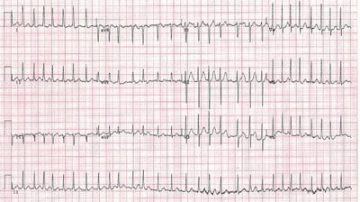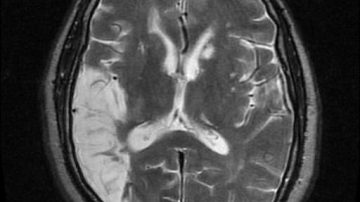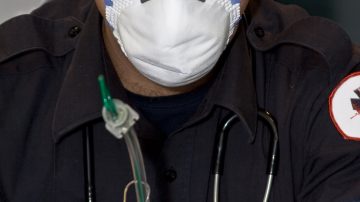The goal of zero device-related infections is what CMS desires for all hospitals, but is not a realistic goal. Nevertheless, we can do everything in our power to minimize central line-associated bloodstream infections (CLABSIs). We now can appreciate that the…
Read MoreA Canadian team has performed a population-based case-control study in Ontario to determine whether this interaction might confer risk for sudden death, which can be triggered by hyperkalemia. During an 18-year period, 349 patients (age, ≥66) died suddenly while taking both…
Read MoreThe key points of dual antiplatelet therapy are that there is NO mortality benefit for DAPT vs ASA alone; there is a small but significant decrease in coronary stent thrombosis and major adverse cardiac events, but there is also an…
Read MoreMore Articles – Cardiovascular diseases, Emergency Procedures, medical procedures, Needle Decompression
Previous investigations suggest that survival to hospital discharge following out-of-hospital cardiac arrest (OHCA) has remained stable (7%–8%) over the past 30 years. Recent recommendations regarding bystander and rescuer cardiopulmonary resuscitation (CPR) technique, post-resuscitation protocols, and regionalization of post-arrest care were…
Read MoreWhat Should We Do About A-Fib/Flutter when There Is Another Acute Condition? Rapid atrial fibrillation or flutter (A-fib/flutter) can be managed by rate or rhythm control, but prior studies have focused on A-fib/flutter occurring in isolation. Now, investigators have retrospectively…
Read MoreEEG in the Evaluation of Patients with Coma and Other Disorders of Consciousness The clinical evaluation of disorders of consciousness involves the challenge of distinguishing coma from vegetative state (VS) and from minimally conscious state (MCS). Recent neuroimaging studies have…
Read MoreNo role for routine carotid doppler ultrasounds to screen for carotid artery stenosis prior to noncardiac surgery Preface: Carotid artery doppler ultrasound scans are frequently ordered prior to noncardiac surgery to decrease the chance of a perioperative stroke. The assumption…
Read MoreIn a new meta-analysis, early management of non–ST-segment elevation myocardial infarctions with thienopyridines was not associated with significantly lower mortality and did not lower major adverse cardiovascular event rates for those eventually undergoing PCI. Current ACC/AHA guidelines support dual antiplatelet…
Read MoreThe American Heart Association/American Stroke Association has updated its comprehensive acute ischemic stroke care guidelines in 2013. The following is a summary of the most important new recommendations: Teleradiology networks are recommended for community hospitals that lack access to neurological…
Read MoreCardiac arrest patients who were intubated had similar outcomes to those who had a supraglottic airway device (e.g., King tube) inserted in the pre-hospital setting. A literature review of 5 studies and over 300,000 patients with pre-hospital cardiac arrest demonstrated…
Read MoreCompared with warfarin, the new agents significantly reduced all-cause and vascular mortality. The new direct-acting oral anticoagulants (DOACs; dabigatran, rivaroxaban, apixaban, and edoxaban) have been found to be noninferior to vitamin K antagonists in clinical trials of stroke prevention in…
Read MoreMild hypothermia is standard of care for comatose survivors after cardiac arrest. Now there is new evidence that survivors of PEA arrest do better neurologically compared with survivors of VF/VT arrests. A retrospective, single-center study shows comatose survivors with shockable…
Read MoreResults of the Syntax trial suggests that PCI and CABG have comparable results for most patients with left main disease. The results suggest that the all-cause mortality was lower with PCI vs CABG in patients with Syntax scores <=32, but…
Read MoreThe USPSTF continues to recommend screening primarily in 65- to 75-year-old men who have ever smoked. U.S. Preventive Services Task Force (USPSTF) Background Prevalence of abdominal aortic aneurysms (AAAs; defined by an aortic diameter of ≥3.0 cm) in adults older…
Read MoreNoninvasive continuous arterial pressure monitoring using finger photoplethysmography is not quite ready for prime time. This technology is comparable to cuff pressures, but this technology is far too variable compared with invasive arterial blood pressure monitoring using an arterial line.…
Read MoreCategories
- ACLS (1)
- Arterial line (33)
- Cardiovascular diseases (77)
- Central line (55)
- Chest Tube (39)
- Dermatology (4)
- Emergency Procedures (138)
- Endocrinology (6)
- Endotracheal Intubation (36)
- Events (24)
- FAST Exam (12)
- Featured (112)
- Featured Procedure (42)
- Gastrointestinal diseases (32)
- Ginecology (3)
- Glidescope Intubation (21)
- Hematology (33)
- Hospital Procedures (85)
- Infections (32)
- Intraosseous line (8)
- King Tube (27)
- Laryngeal Mask Airway (18)
- Lumbar Puncture (36)
- Mechanical Ventilation (34)
- Medical General (95)
- medical procedures (258)
- Needle Decompression (6)
- Nephrology (11)
- Neurological diseases (12)
- Oncology (4)
- Paracentesis (32)
- Pericardiocentesis (3)
- Procedural Sedation (19)
- Respiratory diseases (85)
- RUSH Exam (8)
- Thoracentesis (37)
- Traumatology (24)
- Travel (27)
- Ultrasound-Guided Peripheral IV (13)










